Estonian roadracing championships 1958
Gotta love those dustbin fairings!

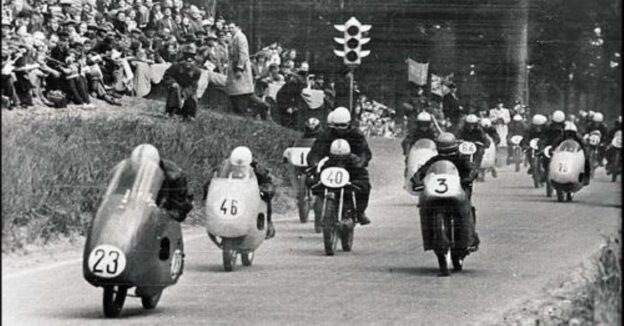
Estonian roadracing championships 1958
Gotta love those dustbin fairings!
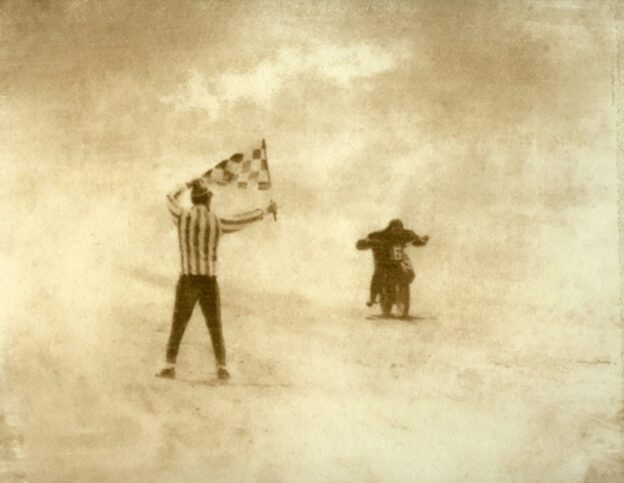
Racing flags are traditionally used in auto and motorcycle racing and similar motorsports to indicate track condition and to communicate important messages to racers. Typically, the starter, (sometimes referred to as the grand marshal) of a race, waves the flags atop a flag stand located at the start/finish line. But the most well-known is the chequered flag.
The chequered flag (or checkered flag, USA) is displayed at the start/finish line to indicate that a race is officially finished. At some race circuits, the first flag point will display a repeat chequered flag (usually on the opposite side of the circuit). The flag is associated with the winner of a race, as they are the first to “take” the win, (in other words, to pass) the chequered flag.
Upon seeing the chequered flag and crossing the finish line, participants are required to slow to a safe speed, and return to their pit garage, parc fermé (French: “closed park”), or paddock, depending on the applicable regulations of the series. Some pits are just that, pits.
Status flags are used to inform all racers of the general status of the course during a race. In addition, green, yellow, red. black and other flags may in modern racing, the waving by marshals and flags, be augmented or replaced by high-intensity lights at various points around the circuit.
There is no standard design for the chequered flag. Although it nearly always consists of alternating black and white squares or rectangles arranged in a chequerboard pattern, the number, size, and length-width proportions of the rectangles vary from one flag to another. Also, the chequered flag typically has a black rectangle at the corner of the flag closest to the top of the flagpole. There have been instances of the black and white squares being painted onto a wooden board and simply held up for participants to observe at the finish line.
It is said the chequered flag originated in 1906 at the Glidden Tours, a road rally held by the AAA in the USA. Sidney Walden divided the courses into sections; the time check at the end of each section was performed by race officials called “checkers”. These checkers used chequered flags to identify themselves.
The earliest known photographic record of a chequered flag being used to end a race was from the 1906 Vanderbilt Cup race held in Long Island, New York.
There is a persistent urban legend claiming that the flag originated in horse racing, but there is no basis for this myth. Another myth claims that the chequered flag’s earliest known use was for 19th century bicycle races in France, but this claim also has no evidence. Another suggestion is that excited ladies waved a chequered tablecloth to indicate to the spectators and racers that the racing was over and it was time to come and eat. But who can tell the now distant past?
The waving of twin chequered flags at the end of a race is also sometimes used. This tradition was accredited to USAC Duane Sweeney at the Indianapolis 500 in 1980 by waving twin chequered flags vigorously at the end of the race. Previously, only a single flag had been used.
In some instances, the winner is handed the chequered flag to celebrate the win with a victory lap.
Today the chequered flag is not only used for racing but has become a representation of the automotive industry itself.
Racing’s Holy Grail is the Chequered flag.
Retrieved from the lost archives by JD. Artist/photographer unknown, it is a great picture!
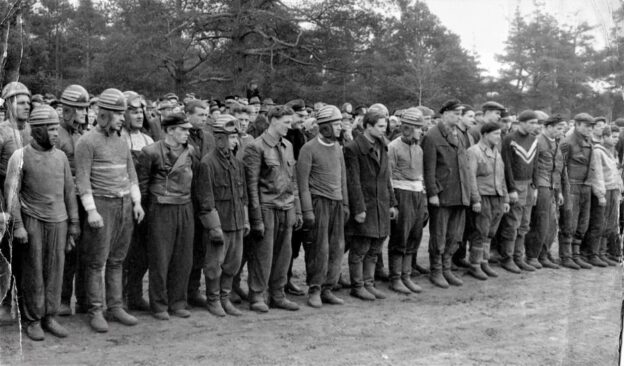
Raceday parade of riders.
Anyone know which location? What year?
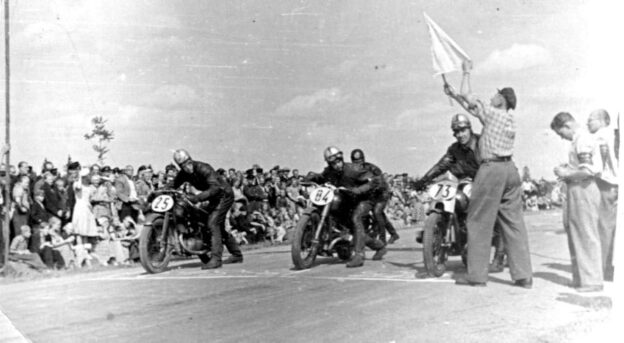
Starting grid Izh vs opposites! 1954
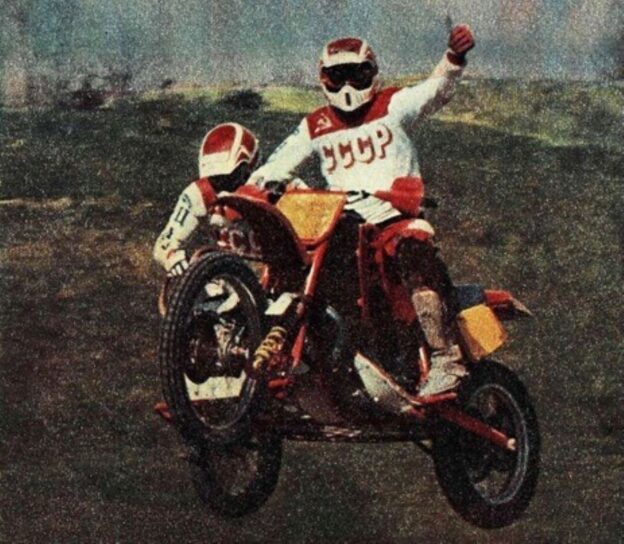
VNIImotoprom 2-stroke motocross
За рулем 5/1990 (At the wheel) cover photo
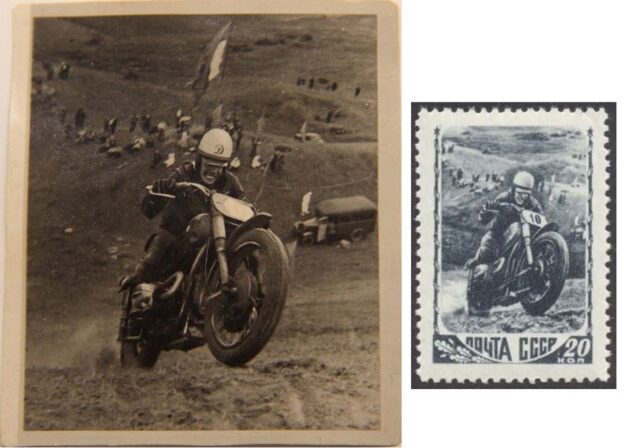
On the stormy days of August 1941 in Moscow, motorcycle hill climbing competitions took place in the Lenin Mountains.
The winner is in the photo: Muscovite Ravil Gubaidulin.
Motorcycle: Custom Made BMW R-51.
In 1948, a postage stamp was issued based on this photograph.
According to the materials of Oleg Nekrasov.

Victor Arbekov was a Russian Grand Prix motocross racer. He competed in the Motocross World Championships from 1963 to 1969. Victor Arbekov is notable for being the first Soviet competitor to win an FIM motocross world championship.
He was born 8 March 1942 in Podolsk, a city in Moscow Oblast. He first sat on a motorcycle when he was 10 years old. He began his career in Podolsk automotoclub DOSAAF, and at 14 years old for the first time participated in a race, just three years later in 1959 he became the Champion of the USSR in the class of 125 on a home-built machine.
He worked as a mechanic and his first top category race was in the 1963 Russian 250 cc Motocross Grand Prix.
In 1964, Arbekov finished the 250cc motocross world championship in third place behind Joël Robert (Belgium) and Torsten Hallman (Sweden). The following year, he defeated Robert to win the 1965 FIM 250cc motocross world championship, on a CZ motorcycle.
He also won 14 USSR motocross championships, and won 10 GPs, 9 in the 250 class and one in the 500 class.
Victor Arbekov died on 18 February 2017 at the age of 74.

A picture (there are more!) from the MOMU Motor Sports Museum archives of our earlier motocross – a real survival course compared to very fast rides on most of today’s hard tracks.
source: MOMU Motor Sports Museum, Сергей Пашацкий, Arno Sillat

The crew Sergey Shcherbinin / Sergey Lyzhin.
Cross 900 motorcycle.
Highway in Irbit (village of Melnikovo). 1981.
source: USSR Sportsbikes
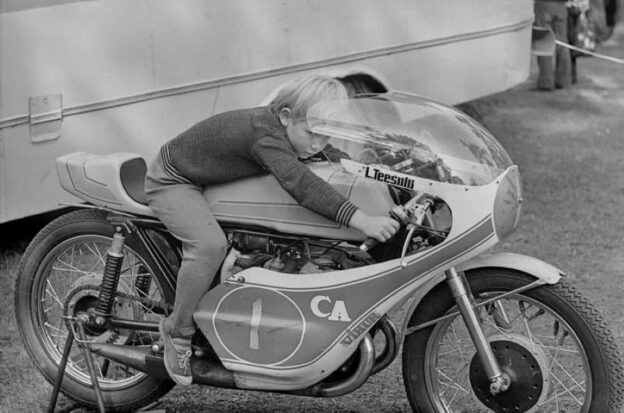
And who remembers the racetrack in Pirita and how motorcycle races were held there, and even with sidecars. Very spectacular!
source: Sergej Lauzis, Олег Керик